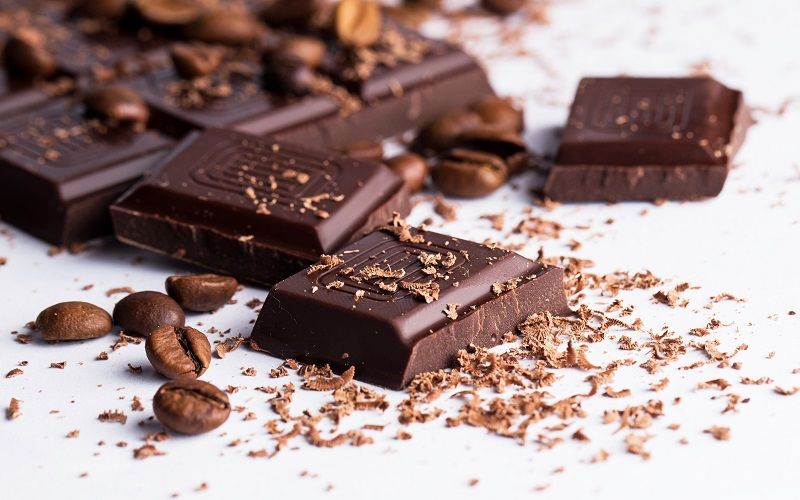Chocolate manufacturers are reducing the amount of cocoa due to rising prices
Source: The DairyNews
The rising cost of cocoa has forced candy manufacturers to create new treats with fewer or no expensive ingredient, Bloomberg reports.

When last year, Mars Inc. made minor changes to its popular Galaxy chocolate bar, reducing the standard product size by 10 grams and repackaging a more compact treat without reducing the price, British buyers were surprised, but cocoa merchants were not.
Cocoa prices have risen to an all-time high, and market participants do not expect any decline in the near future. Prices have skyrocketed as the world's largest producers in West Africa struggle with drought and disease, as well as structural problems that could drag on for years. From the 1980s to 2023, futures traded in New York averaged well below $3,500 per metric ton each year. On February 22, cocoa futures exceeded $6,000 per ton for the first time, and the market fears that they have yet to be traded.
"We have been actively trying to find ways to cover the rising costs of raw materials and operations," a Mars Wrigley UK representative said in an email. "Reducing the size of our products is not an easy decision that we have made."
So far, companies have shifted higher costs to consumers. But no one needs chocolate to live, and every price increase jeopardizes sales. According to a September survey conducted by NIQ, a consumer research company, consumers are likely to cut back on spending on chocolates and sweets if inflation continues.
Faced with limited opportunities for additional price increases, companies are reducing packaging, using automation to reduce production costs, and promoting products with fewer cocoa or other basic flavors.
Marketing focused on toppings and low-chocolate products is "definitely on the agenda," says Billy Roberts, senior food and beverage economist at CoBank, the largest provider of private loans to the U.S. agricultural industry.
Today, more than 40% of molded and segmented chocolate bars sold in the United States are filled with something else, whether it's caramel, nuts or fruits, says Karl Kvash III, head of snacks and nutrition at Euromonitor International. "This trend has been on the wane for a while, but now, given the high cost of cocoa and consumers looking for indulgences, we will see more of these new products enter the market," he says.
Cocoa butter, obtained by grinding the grains, is a key ingredient in chocolate. An average bar of milk chocolate contains about 20% cocoa butter. But some food manufacturers are finding ways to replace some of the cocoa butter in their products with cheaper substitutes such as palm oil. Swedish company AAK AB, a manufacturer of cocoa butter substitutes, says that the high price of cocoa and cocoa butter has prompted more and more customers to pay attention to its products, although the broader trend towards the production of smaller chocolate bars, called "shrinkflation" in the food industry, has somewhat muted the impact.
The shift from cocoa butter to cocoa-free substitutes works better with non-premium chocolate products, such as thin coatings on granola bars and toppings in baked goods, rather than with more traditional chocolate bars.
"In my opinion, messing with recipes and taste characteristics just because cocoa costs have increased would be a mistake," Nestlé CEO Marc Schneider said during a conversation with reporters on February 22. According to him, the company may have to adjust marketing or brand support, but "this is just another change in the value of the product that we tactically have to deal with." For example, the industry has also recently faced high sugar prices.
Cocoa prices have risen to an all-time high, and market participants do not expect any decline in the near future. Prices have skyrocketed as the world's largest producers in West Africa struggle with drought and disease, as well as structural problems that could drag on for years. From the 1980s to 2023, futures traded in New York averaged well below $3,500 per metric ton each year. On February 22, cocoa futures exceeded $6,000 per ton for the first time, and the market fears that they have yet to be traded.
"We have been actively trying to find ways to cover the rising costs of raw materials and operations," a Mars Wrigley UK representative said in an email. "Reducing the size of our products is not an easy decision that we have made."
So far, companies have shifted higher costs to consumers. But no one needs chocolate to live, and every price increase jeopardizes sales. According to a September survey conducted by NIQ, a consumer research company, consumers are likely to cut back on spending on chocolates and sweets if inflation continues.
Faced with limited opportunities for additional price increases, companies are reducing packaging, using automation to reduce production costs, and promoting products with fewer cocoa or other basic flavors.
Marketing focused on toppings and low-chocolate products is "definitely on the agenda," says Billy Roberts, senior food and beverage economist at CoBank, the largest provider of private loans to the U.S. agricultural industry.
Today, more than 40% of molded and segmented chocolate bars sold in the United States are filled with something else, whether it's caramel, nuts or fruits, says Karl Kvash III, head of snacks and nutrition at Euromonitor International. "This trend has been on the wane for a while, but now, given the high cost of cocoa and consumers looking for indulgences, we will see more of these new products enter the market," he says.
Cocoa butter, obtained by grinding the grains, is a key ingredient in chocolate. An average bar of milk chocolate contains about 20% cocoa butter. But some food manufacturers are finding ways to replace some of the cocoa butter in their products with cheaper substitutes such as palm oil. Swedish company AAK AB, a manufacturer of cocoa butter substitutes, says that the high price of cocoa and cocoa butter has prompted more and more customers to pay attention to its products, although the broader trend towards the production of smaller chocolate bars, called "shrinkflation" in the food industry, has somewhat muted the impact.
The shift from cocoa butter to cocoa-free substitutes works better with non-premium chocolate products, such as thin coatings on granola bars and toppings in baked goods, rather than with more traditional chocolate bars.
"In my opinion, messing with recipes and taste characteristics just because cocoa costs have increased would be a mistake," Nestlé CEO Marc Schneider said during a conversation with reporters on February 22. According to him, the company may have to adjust marketing or brand support, but "this is just another change in the value of the product that we tactically have to deal with." For example, the industry has also recently faced high sugar prices.











